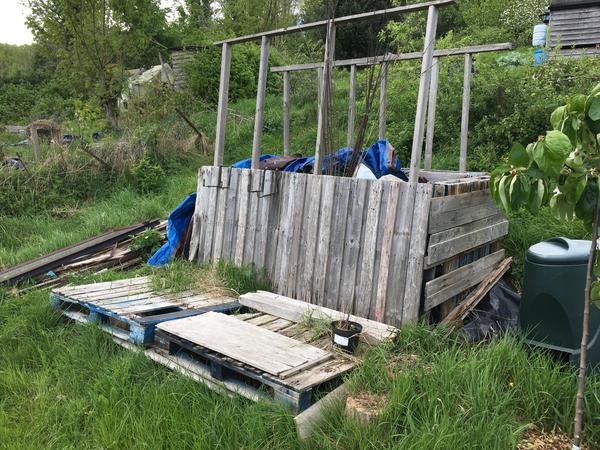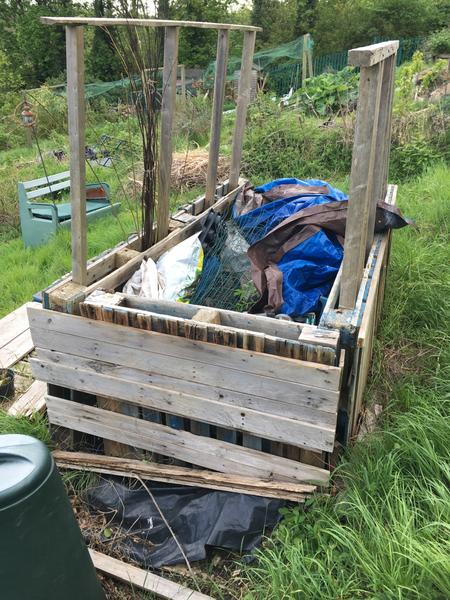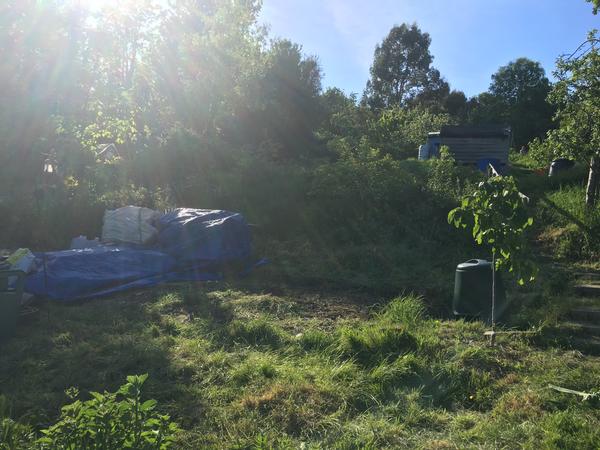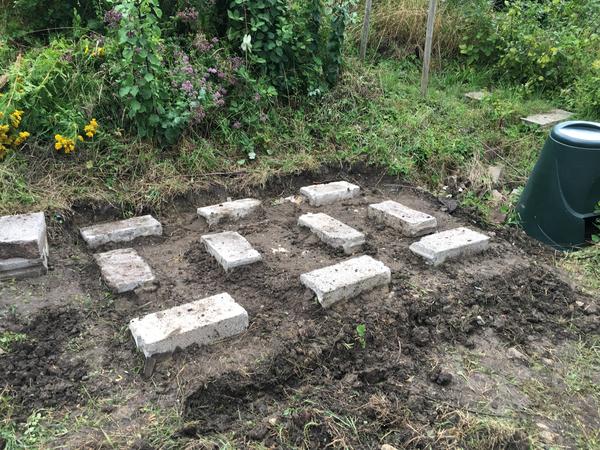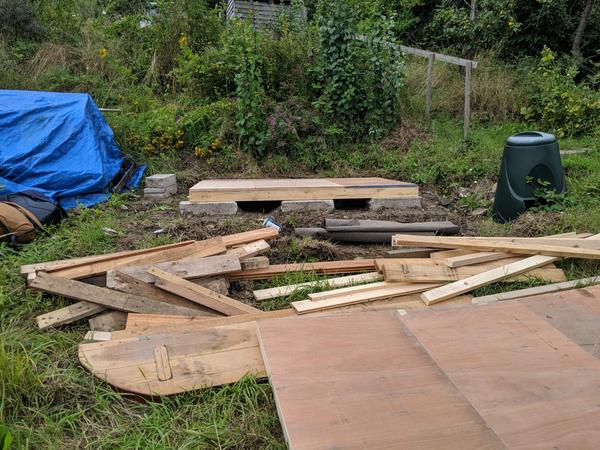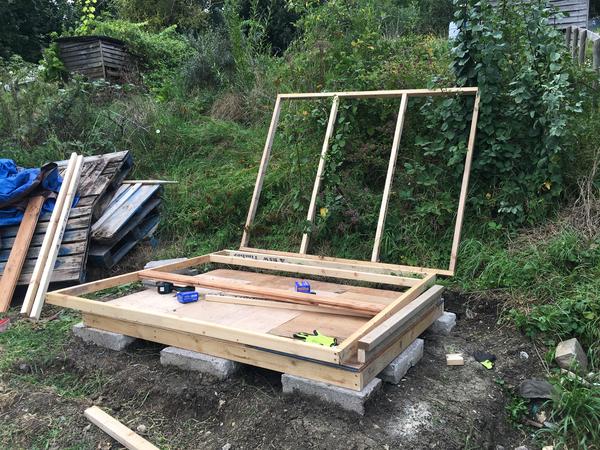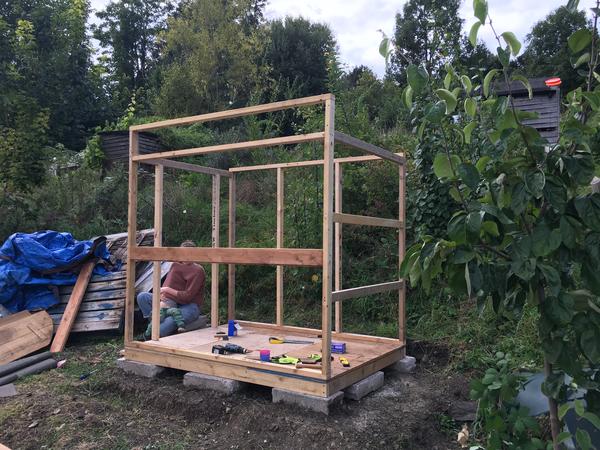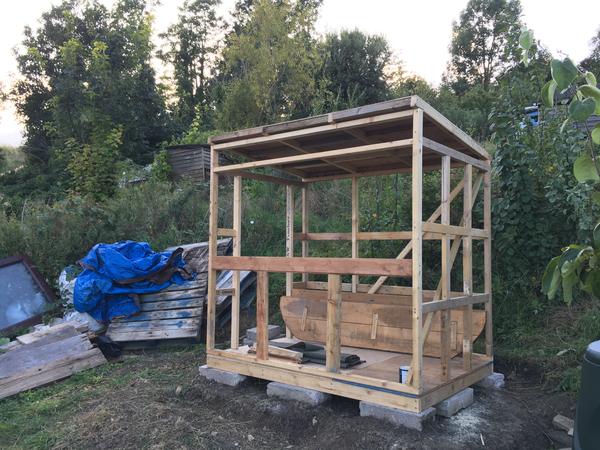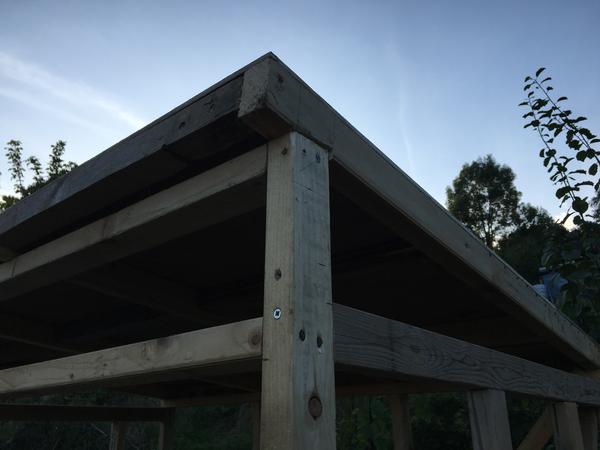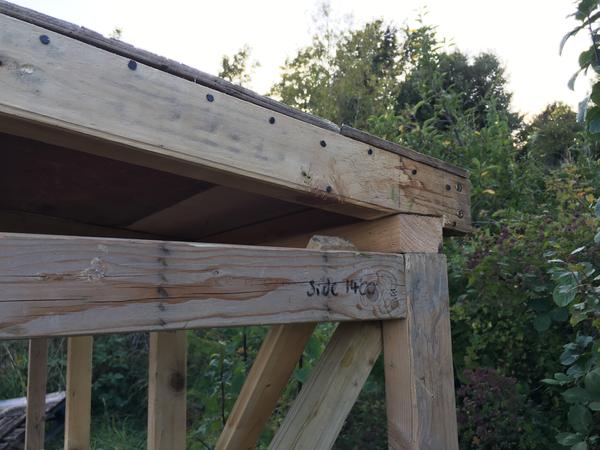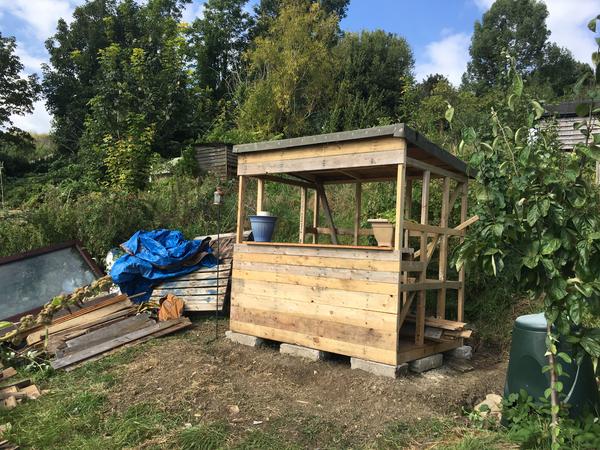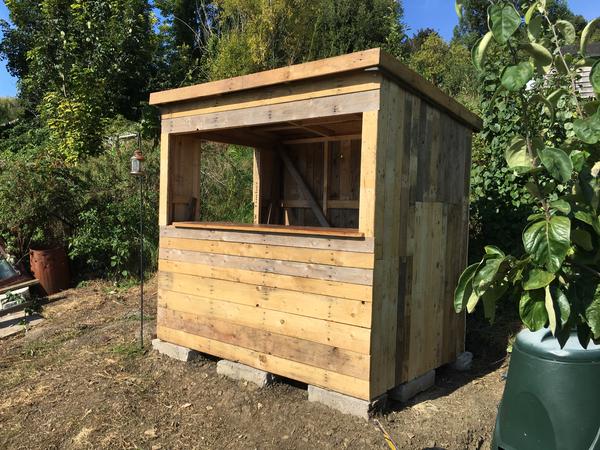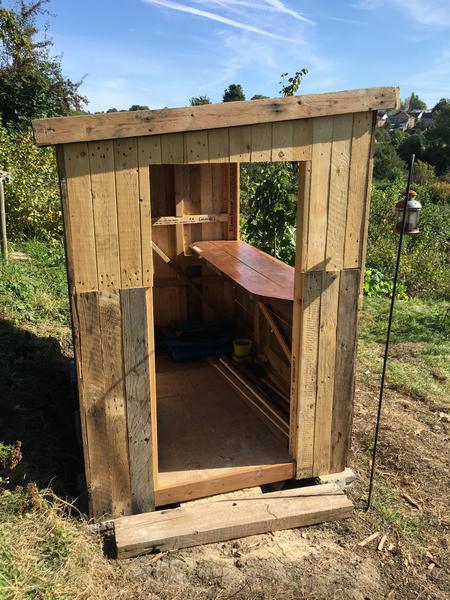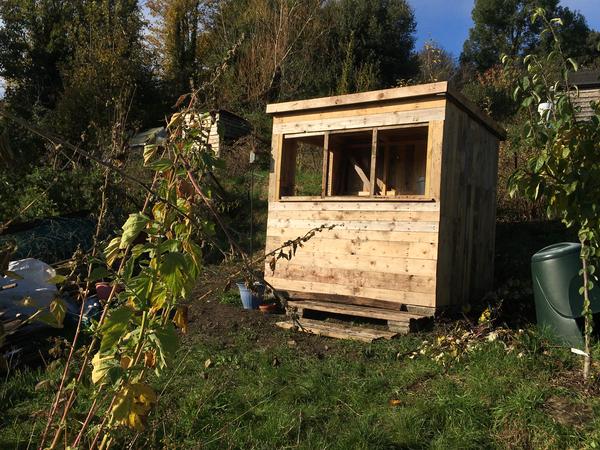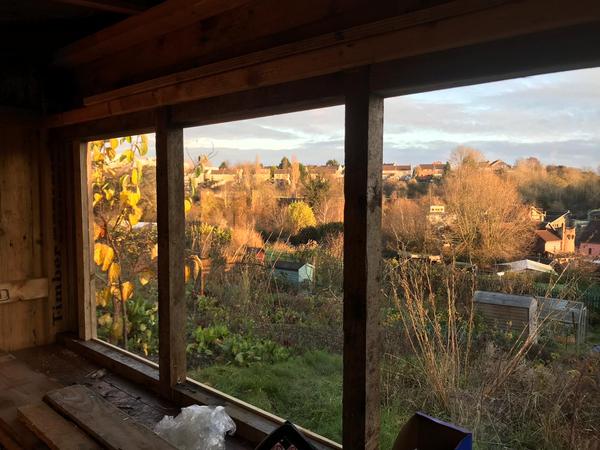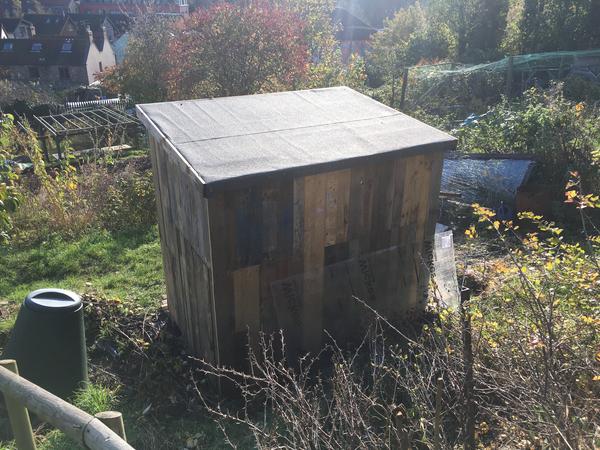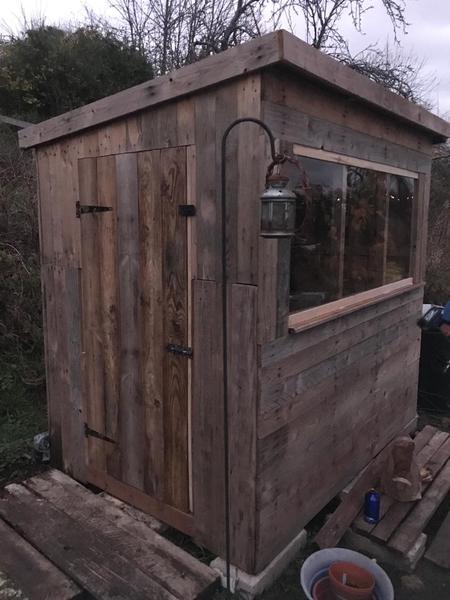A friend was in need of a shed on her allotment to store tools and as a place to shelter in the rain, so I helped her to build one. The aim was to build something solid that would stand up to the elements (unlike most allotment sheds), to use recycled materials as far as possible, and ideally to fit within a £100 budget.
The main costs were the structural timber, which was sourced from the Bristol Wood Recycling Project:
- ~15m of 2x3” softwood timber;
- ~60m of 1.5x2.5” softwood timber.
Also from the BWRP were: sheets of 12mm ply for the floor and roof, solid wood planks for the door, an odd piece of shelving which worked brilliantly as a big window sill, baton for the window frame. Other costs were: two boxes of screws and roofing nails (Screwfix), acrylic sheet for the window (Wickes). Everything else was sourced for free, from friends or found on the streets of Bristol: breeze blocks for the base, pallet wood for the cladding, miscellaneous timber for the frame, roof felt and felt glue and hinges and shackles for the door.
I didn’t keep details of all the money spent, but the final cost was approximately £150 and the end result was a sturdy shed that should last quite a few years.
